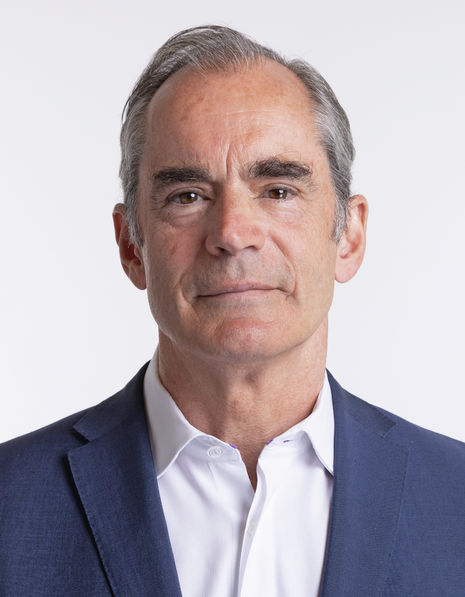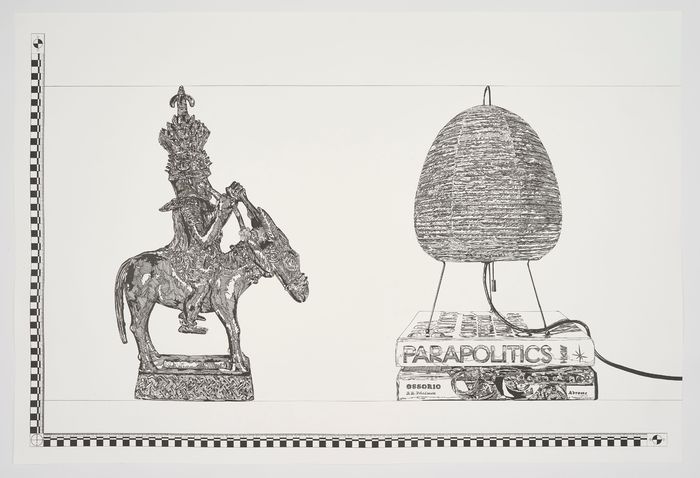Tate head on a ‘great British brand that resonates throughout the world’
Ben Birch speaks to Roland Rudd, chair of the trustees at the Tate, questioning what gets put up on the walls, and why?

Walking through the Clore Gallery of Tate Britain can sometimes make me think that galleries never change. The frames are old, the paintings are older, and I begin to wonder if they have simply calcified into the wall on which they’ve been hung. This is, of course, not true. Art is an ever-changing thing and museums must match this. The people who keep apace with this change are not just the artistic directors, but also the board of trustees. The chair of Tate’s board of trustees is Roland Rudd. We met over video call — behind him was not the dark red of gallery wallpaper or the gold of ornately framed paintings, but rather the glass of a sleek, modern office.
When he is not busy with Tate, Rudd is the chair of FGS Global, a strategic communications firm that advises businesses. He describes the role of Tate’s board of trustees as offering a ‘positive critique’ of ideas brought to them by the group’s artistic directors, like Maria Balshaw, the director of Tate. Art begins with a vision but is refracted through the prism of business literacy before it becomes an exhibition.
“He asks two questions when he goes to an exhibition: is it artistically good? Is it going to make money?”
The Tate receives £40 million a year from the government. Around £20 million more comes from Tate members, but this is still not enough for the group to stay financially sound. And I’m told, as well, that the Tate’s profitability is not evenly spread between each of its museums. Tate Modern is the most popular gallery with a footfall of 6 million; Tate Britain is only 1 million; and Tate Liverpool and Tate St. Ives both hover at around half a million. In St. Ives, the footfall is seasonal as holidaymakers are more likely to visit while the sun still shines. Holding the balance of these galleries is a delicate task. This is why, when I asked Rudd if he looks at art differently these days since becoming a trustee in 2017, he told me he asks two questions when he goes to an exhibition: is it artistically good? Is it going to make money?

Gauguin was a stockbroker, Rousseau was a customs officer, and Samuel Johnson supposedly said only a fool writes for anything but money. The art world might not conceive of itself as driven by money, but that is the reality. Despite this, Rudd said that some exhibitions need to be put on even if the executives know it is unlikely to turn a profit. There is art that is important and there is art which is profitable — these are not always the same things. Clearly, these galleries see themselves as ambassadors for British artists and their art. Rudd called the Tate a “great British brand that resonates throughout the world,” likening it to the BBC or Oxford and Cambridge.
“The art world might not conceive of itself as driven by money, but it is the reality”
But they are certainly not the only gallery fighting to claim the name of Britain’s great art brand. There are longstanding tensions between the Tate and the National Gallery. Both galleries have historical periods to which their permanent exhibitions must belong. For the National Gallery this is from the mid thirteenth century to 1900; for Tate Britain it is 1500 to the present day, and for Tate Modern it is 1900 onwards. However, these are totally arbitrary dates — even the National Gallery’s director Gabriele Finaldi has expressed politely worded frustration at these restrictions. Smiling, Rudd acknowledged that the Tate was keener on keeping the restrictions in place. There are conversations between the galleries about what the other should and shouldn’t put on. He tells me that the boards of both galleries have a dedicated liaison trustee who communicates with the other. This image reminded me of the Moscow-Washington hotline — two executives sweating down the red telephone as they discuss a Titian exhibition.
My favourite room in the Tate Britain is towards the end of the Clore Gallery. It is full of Turner’s unfinished late works when his style became more impressionistic and less defined. At the far end of the room hangs an untitled Rothko, painted in the same smog yellow colours of the late Turner pieces in the room. The resemblance is so similar that you’d be forgiven for thinking it is Turner’s. It makes me wonder, again, if galleries have ever really changed. Despite the flux that exists behind the scenes of these galleries, my conversation with Rudd made it clear that Tate’s galleries will always be home to art that people must see. All art has a price. From the first lot at a Sotheby’s auction to a painted shell resting on the quayside, it is a reality of art. Nonetheless, the price is rarely our first thought. Often, there is nothing to be thought, but rather simply felt. The institutions that still allow us to experience these feelings for free should be applauded.
 Comment / Plastic pubs: the problem with Cambridge alehouses 5 January 2026
Comment / Plastic pubs: the problem with Cambridge alehouses 5 January 2026 News / Cambridge businesses concerned infrastructure delays will hurt growth5 January 2026
News / Cambridge businesses concerned infrastructure delays will hurt growth5 January 2026 News / New movement ‘Cambridge is Chopped’ launched to fight against hate crime7 January 2026
News / New movement ‘Cambridge is Chopped’ launched to fight against hate crime7 January 2026 News / AstraZeneca sues for £32 million over faulty construction at Cambridge Campus31 December 2025
News / AstraZeneca sues for £32 million over faulty construction at Cambridge Campus31 December 2025 Interviews / You don’t need to peak at Cambridge, says Robin Harding31 December 2025
Interviews / You don’t need to peak at Cambridge, says Robin Harding31 December 2025










